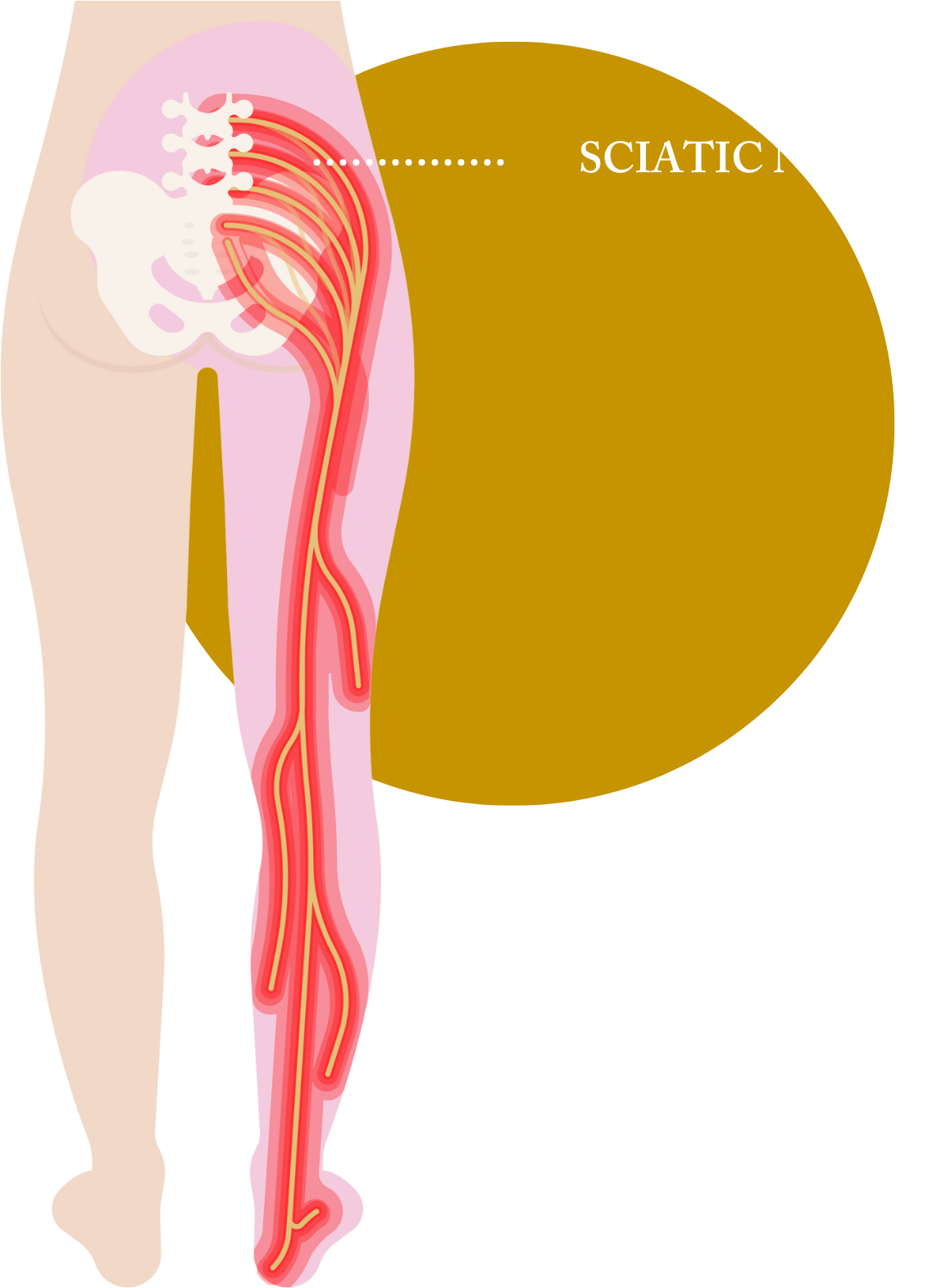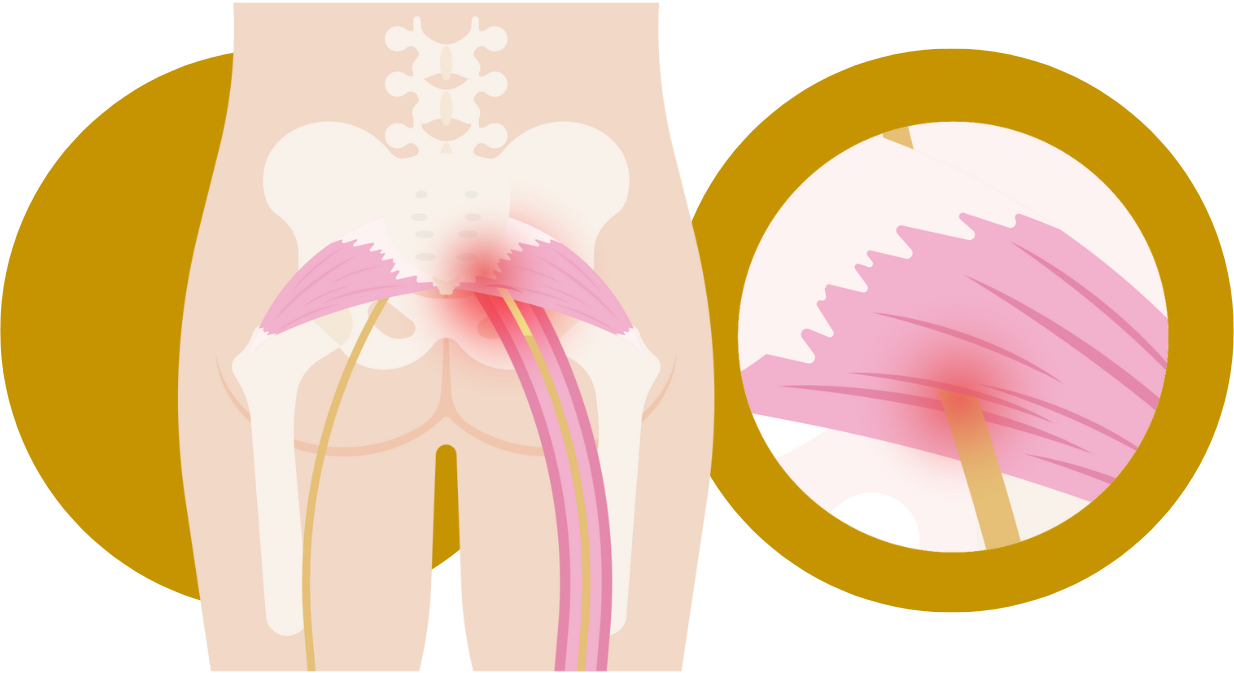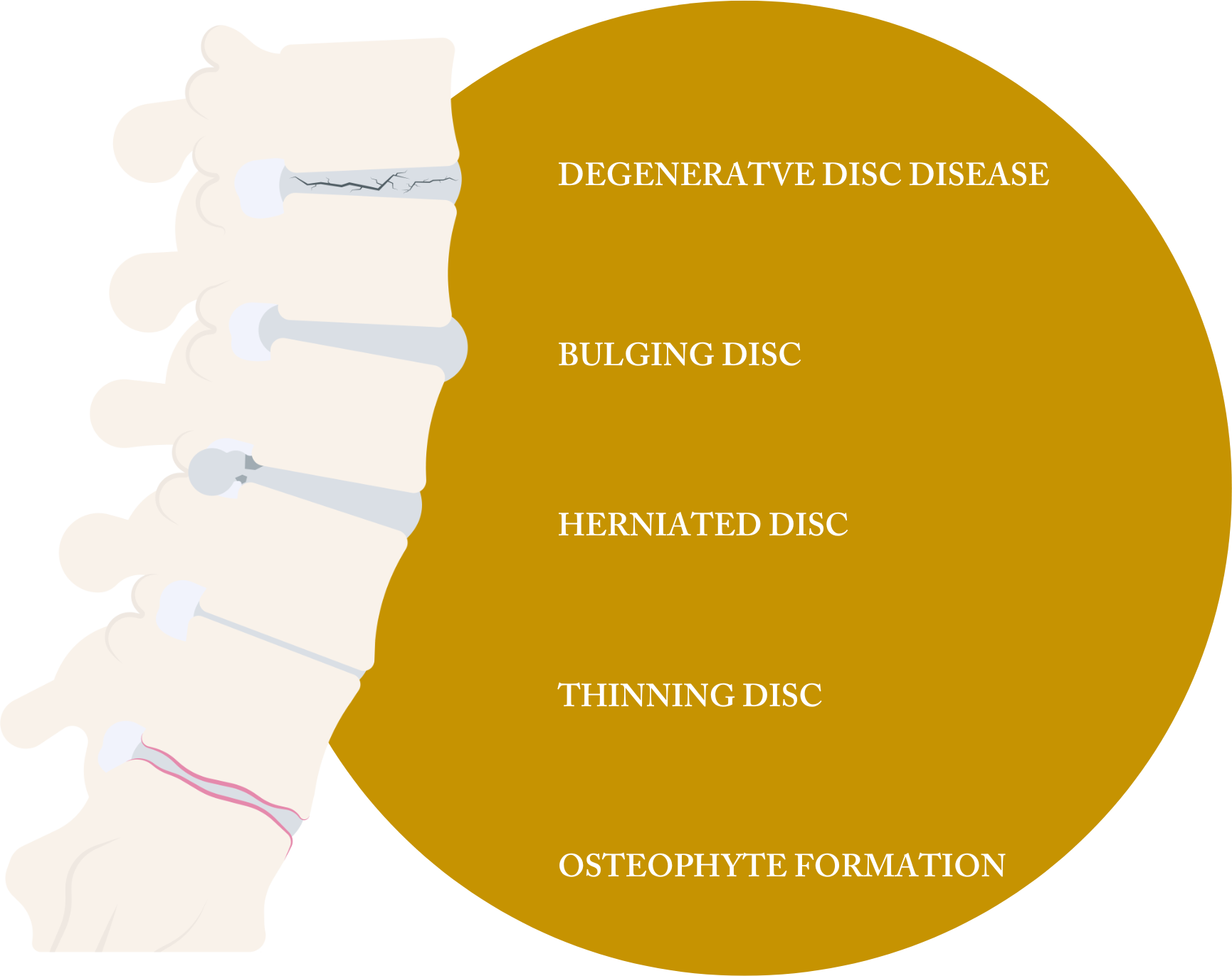Sciatica
What is the sciatic nerve?
The sciatic nerve is the longest and thickest nerve in the body.
It’s made up of five nerve roots: two from the lower back region called the lumbar spine and three from the final section of the spine called the sacrum.
The five nerve roots come together to form a right and left sciatic nerve.
What is Sciatica?
Sciatica is a term that generally refers to nerve pain in your leg caused by a problem in your lower back. The medical term for sciatica is ‘radicular leg pain’ because of the way the pain radiates from your back and hip into your legs through the spine.
What are the common symptoms of sciatica?
Shooting, stabbing, electric shock pain that tends to start in your lower back and buttocks and runs down one leg past your knee and sometimes into your calf and foot
Numbness, weakness or pins and needles in a part of your buttock, leg and foot
Lower back pain – if you only have lower back pain, or if the pain in the leg is in a large area, then it is unlikely to be sciatica
Not all leg pain is sciatica
What are the common causes of sciatica?
Piriformis syndrome
A condition in which the piriformis muscle, located in the buttock region, spasms and causes buttock pain
The piriformis muscle also can irritate the nearby sciatic nerve and cause pain, numbness and tingling along the back of the leg and into the foot (similar to sciatic pain)
Spinal Stenosis
Spinal stenosis is a narrowing of the spaces within your spine, which can put pressure on the sciatic nerve. Spinal stenosis occurs most often in the lower back and the neck. Some people with spinal stenosis may not have symptoms.
Herniated Disc
Sciatica is a certain type of nerve pain that can be caused by a herniated lumbar disc compressing the sciatic nerve
A herniated disc (also called bulged, slipped or ruptured) is a fragment of the disc nucleus that is pushed out of the annulus, into the spinal canal through a tear or rupture in the annulus. Discs that become herniated usually are in an early stage of degeneration
Degenerative Disc Disease
If the sciatic nerve in the lower back is compressed, it can result in pain and numbness that runs down the hip and leg known as sciatica. Degenerative disc disease (DDD) is a common source of back pain, and it may lead to sciatic nerve irritation in certain situations.
How do you diagnose sciatica?
Since there are many disorders that cause sciatica, the chiropractor's first step is to determine what is causing sciatica.
Forming a diagnosis involves a thorough review of the patient's medical history, and a physical and neurological examination.
Diagnostic testing may include an x-ray, MRI, CT scan and/or electrodiagnostic tests (electromyography or EMG and nerve conduction velocity or NCV). These tests help to detect possible contraindications to spinal adjustments and other chiropractic therapies
If you are diagnosed with sciatica the Chiropractors at WYLD will deliver gentle yet effective adjustments into the spine to help facilitate the correction of your posture and encourage the muscles to support a healthy functioning spine. Stretches and strengthening exercises may be given to help improve range of motion within the spine. This will also allow the muscles to work in harmony rather than individualised muscle groups helping to improve the overall functioning of the body.
Our Approach For Chiropractic Care
Gentle and effective treatment
Comfort with state of the art Chiropractic equipment
Safe for people of all ages
What To Expect At Your First Chiropractic Visit
An initial Chiropractic exam will typically have three parts: a consultation, case history, and physical examination.
Laboratory analysis and X-ray examination may be performed.
Consultation. The patient meets with the chiropractor and provides a brief synopsis of lifestyle factors and concerns, such as:
Duration and frequency of symptoms
Description of the symptoms (e.g. burning, throbbing)
Areas of pain
What makes the pain feel better (e.g. sitting, stretching)
What makes the pain feel worse (e.g. standing, lifting)
Lifestyle factors
Case history. The chiropractor identifies the area(s) of complaint and the nature of the stress involved by asking questions and learning more about different areas of the patient's history, including:
Family history
Dietary habits
Past history of other treatments (chiropractic, osteopathic, medical and other)
Occupational history
Psychosocial history
Other areas to probe, often based on responses to above questions
Physical examination. A chiropractor may utilize a variety of methods to determine the spinal segments that require chiropractic treatments, including but not limited to static and motion palpation techniques determining spinal segments that are hypo mobile (restricted in their movement) or fixated. Depending on the results of the above examination, a chiropractor may use additional diagnostic tests, such as:
X-ray to locate subluxations (the altered position of the vertebra)
A device that detects the temperature of the skin in the paraspinal region to identify spinal areas with a significant temperature variance that requires manipulation.
Chiropractors are trained in a variety of methods to assess the underlying cause of the problem, including:
Evaluation and management services. Chiropractors are trained in examining the joints, bones, muscles and tendons of the spine, head, extremities and other areas of the body with the purpose of noting any misalignment, tenderness, asymmetry, defects or other problems.
Neurologic and other common physical examination procedures. Chiropractors are trained to perform a variety of neurologic tests (nerve root compression/tension, motor strength, coordination, deep tendon and pathological reflexes, etc.) and are skilled in performing orthopedic, cardiovascular and many other common examinations.
Specialised assessment. Chiropractors are trained to assess range of motion, stability, muscle strength, muscle tone and other assessments with the lower back.
Common diagnostic studies. Chiropractors are trained in use of diagnostic studies and tools such as radiography (X-rays), laboratory diagnostics and neurodiagnostics.
References:
https://chiromt.biomedcentral.com/articles/10.1186/s12998-019-0239-x
https://www.sciencedirect.com/science/article/abs/pii/S1529943005008338
https://www.uhhospitals.org/Health-Talks/articles/November/chiropractic-treatment-of-sciatica
https://www.correctivehealthatx.com/blog/chiropractic-helps-and-heals-sciatica/
https://www.healthline.com/health/back-pain/chiropractor-for-sciatica
https://evolvewellnessvancouver.ca/2021/09/03/can-a-chiropractor-help-with-sciatica/
https://www.thespinejournalonline.com/article/S1529-9430(05)00833-8/fulltext








